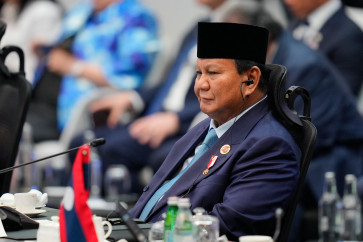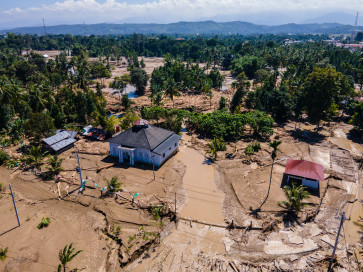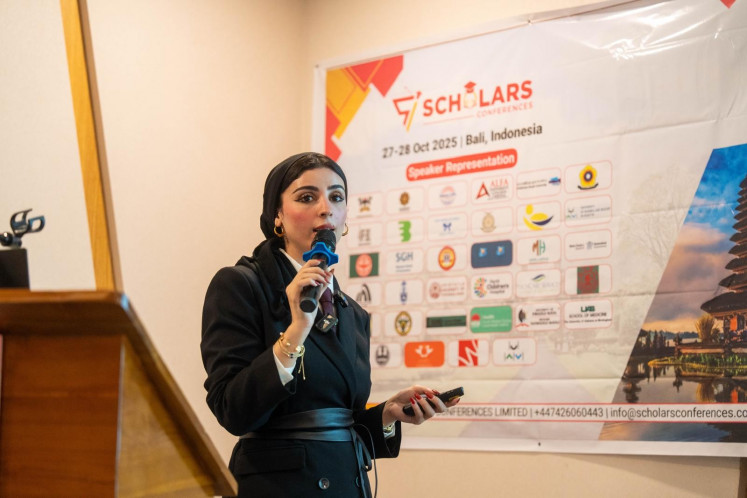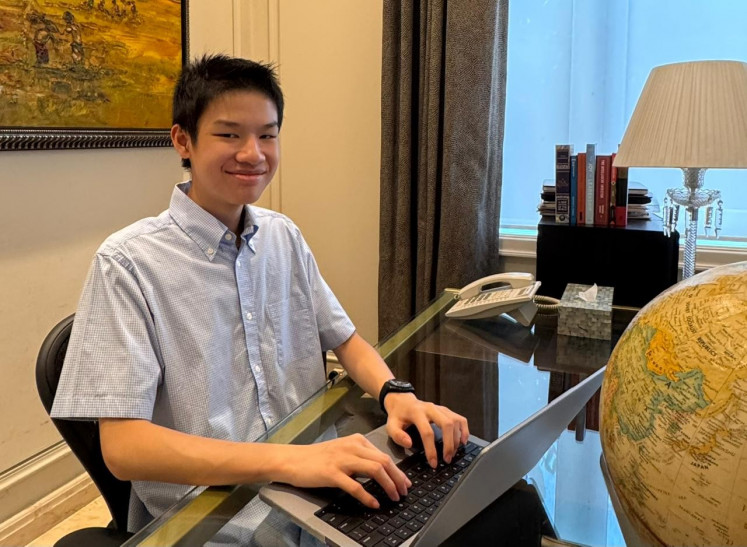Popular Reads
Top Results
Can't find what you're looking for?
View all search resultsPopular Reads
Top Results
Can't find what you're looking for?
View all search resultsPlagiarism: What can we learn from Afi's case
Afi’s plagiarism case is best understood with some background knowledge about Indonesia’s education system.
Change text size
Gift Premium Articles
to Anyone
D
espite gaining great public attention from her writing, particularly the one entitled “Warisan” (The Legacy), Afi Firda Nihaya is under attack for alleged plagiarism.
A post on her Facebook wall entitled “Belas Kasih Dalam Agama Kita” (Compassion in Our Religion), which she claimed as hers, was allegedly copied from Mita Handayani, another Facebook user. After being attacked on social media, Afi went live on Facebook to express her frustration and disappointment over those who attacked her.
Ironically, Afi also used someone else’s words in this video, adding even more fuel to the fire.
Afi’s plagiarism case is best understood with some background knowledge about Indonesia’s education system.
It is not certain whether Afi herself knows what plagiarism really means as she is a student of an Indonesia high school, in which rote learning and memorization are prominent and normal.
Plagiarism in an educational landscape like that of Indonesia and China is simply called “imitating,” which is suggested by teachers in most Indonesian schools. In Diane Peorari’s terms, if an act of plagiarism was not committed intentionally, it is referred to as non-prototypical plagiarism. This type of plagiarism is done without any intention to deceive.
Drawing on my personal experience as a student, I was often encouraged to write the definition of certain scientific terms during an exam, which must be similar to their original texts or sources – without paraphrasing and without the attribution or credit to the sources.
During my undergraduate studies, I was not even taught what plagiarism was; its characteristics, types, and so on. What I knew about plagiarism was that it meant copying someone else’s works.
Read also: Tumblr blogs to follow for aspiring writers
I first noticed what plagiarism was and discovered its consequences during my academic training in Bali in 2013 as an Australian scholarship recipient. My academic English teacher asked me and my classmates the question, “What reference systems did you use for your thesis during your bachelor studies?”
Most of us said that we did not know.
“Then you are committing plagiarism,” he said.
Only then was I taught strategies on how to avoid plagiarism and how to cite sources using the standardized style, mostly from the American Psychological Association (APA). However, all this knowledge is absent in most educational institutions in Indonesia, from secondary schools to universities.
Another experience I had that demonstrated both the absence of such knowledge and the dangers of plagiarism in most Indonesian educational spheres, was when teaching a writing class to my undergraduate students.
I was tutoring four classes, each of which comprised of 45 students. I once assigned them to write a single paragraph and warned them not to directly take or copy it from the internet. In the next lesson, I collected their work and brought them home. To my surprise, I found that 10 of my students had taken their work directly from the internet. I discovered this by simply running a search of their sentences on Google to find the original sources.
Read also: 15 emerging writers selected for Ubud Writers & Readers Festival 2017
In the following class, I conducted individual conferences with those whom I had caught plagiarizing. Most of them admitted they did not think that I would examine their work thoroughly. This answer implies that in their previous writing classes, the students’ work was never corrected, or the assignments were probably just a formality for the lecturer.
I assumed that this is because giving written correction or feedback to such large classes was such a laborious and painstaking job for the instructors, and one with little financial reward.
Afi’s case, along with my experience, is a wake-up call for the importance of implicit and explicit plagiarism instructions. It conveys the need to start teaching students from early childhood education through retelling stories that require them to employ their own words.
At higher levels, students should be taught the nature of plagiarism and its consequences, and how to avoid it. Even, at the outset, universities should provide an academic introductory course to freshmen as a part of the student orientation program, which includes lessons on how to create presentation slides, borrow and access (e)books from both the library and the internet, and so on.
Writing instructors can detect plagiarism through reading relevant resources and using a synthesis grid. By reading extensively on relevant subjects assigned to the students, it will afford the writing instructors the mental representation that enables them to distinguish between the students’ work and textual sources.
With the absence of plagiarism detectors such as Turnitin, as commonly used in academia, the employment of a synthesis grid — several columns consisting of the original and the paraphrased texts — allows teachers, particularly English writing instructors, to discover whether their students have resorted to plagiarism and also gauge their paraphrasing skills.
***
Husnawadi has an MA. TESOL certificate and is currently a permanent English lecturer at UIN Mataram. He teaches writing, from paragraph writing to argumentative essay writing. His research interests include Direct and Indirect Corrective Feedback; CALL, the teaching of Writing and Speaking; and Teachers’ self-efficacy. He can be reached at debater1985@gmail.com.
---------------
Interested in writing for thejakartapost.com? We are looking for information and opinions from experts in a variety of fields or others with appropriate writing skills. The content must be original on the following topics: lifestyle ( beauty, fashion, food ), entertainment, science & technology, health, parenting, social media, and sports. Send your piece to community@jakpost.com. Click here for more information.











